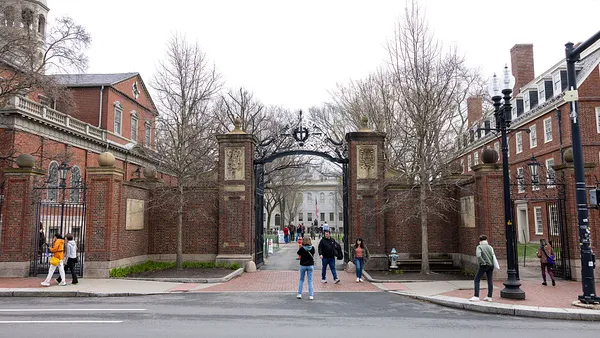About 550 colleges and universities across the United States have limited access to federal student aid dollars. They’re under a type of scrutiny called “heightened cash monitoring” by the Department of Education and, as of last week, their names are public.
For many, it was not a surprise to see that more than half of the schools on the list are for-profit institutions. Many institutions in that sector have faced intense scrutiny for sometimes predatory recruiting practices and questionable educational quality. One surprise, however, was the number of historically black colleges and universities under scrutiny.
Out of the approximately 100 HBCUs in the United States, eight of them are on the list: Alabama State, Allen University, Arkansas Baptist College, Johnson C. Smith University, Lawson State Community College, Paul Quinn College, the University of the Virgin Islands, and Wilberforce University.
While just 2% of nonprofit private or public universities are under the department’s scrutiny, those eight schools put almost 8% of HBCUs under monitoring.
Mark Kantrowitz, senior vice president of Edvisors and financial aid expert, said the reason for that overrepresentation is partly because HBCUs enroll a more at-risk population — students who are less likely to graduate because of their low-income status. Kantrowitz also pointed to changes in the Parent Plus Loan eligibility in recent years that seem to have disproportionately affected HBCUs because their students’ parents are more likely to apply for the loans.
While the release of this list of schools has generated much talk across the higher education industry, Kantrowitz encourages people to take the information with a grain of salt.
“It doesn’t mean the school is at high risk of shutting down,” he said.
There are two levels of heightened cash monitoring. All but one HBCU on the list — Arkansas Baptist College — and all but 69 schools overall are under the lower level of monitoring, meaning there is little institutional impact from the status. Schools like Arkansas Baptist College, however, have to disburse student aid from their own coffers and then apply for reimbursement from the federal government. These colleges and universities must have enough cash on hand to cover the reimbursement delay. Notably, the for-profit Corinthian Colleges Inc. did not have the financial cushion to weather the government’s reimbursement model and the department’s sanctions directly contributed to the collapse of a number of its schools nationwide.
Most colleges and universities, though, go in and out of scrutiny without significant negative consequences. Corinthian, Kantrowitz said, was the exception, not the rule.
Schools are placed under heightened cash monitoring for a range of issues, including the simple mistake of missing reporting deadlines. More than half of the schools on the list, however, are there for reasons relating to their financial health. But, that’s financial health as identified by the Department of Education. Moody’s, for example, identifies a much smaller list of schools when it highlights financial liability.
Edvisors provides free information to parents and students about planning and paying for college. Kantrowitz said he doesn’t find the list of schools under heightened cash monitoring to be especially meaningful for consumers and doesn’t expect this list going public to change his advice to students.
“If a school has a very high [student loan] default rate or a very low graduation rate,” Kantrowitz said, “if it doesn’t have the proper accreditation, those are things you need to be concerned about before you invest your money in an education from that institution.”
Would you like to see more education news like this in your inbox on a daily basis? Subscribe to our Education Dive email newsletter! You may also want to read Education Dive's look at 3 trends changing the face of for-profit higher ed.














